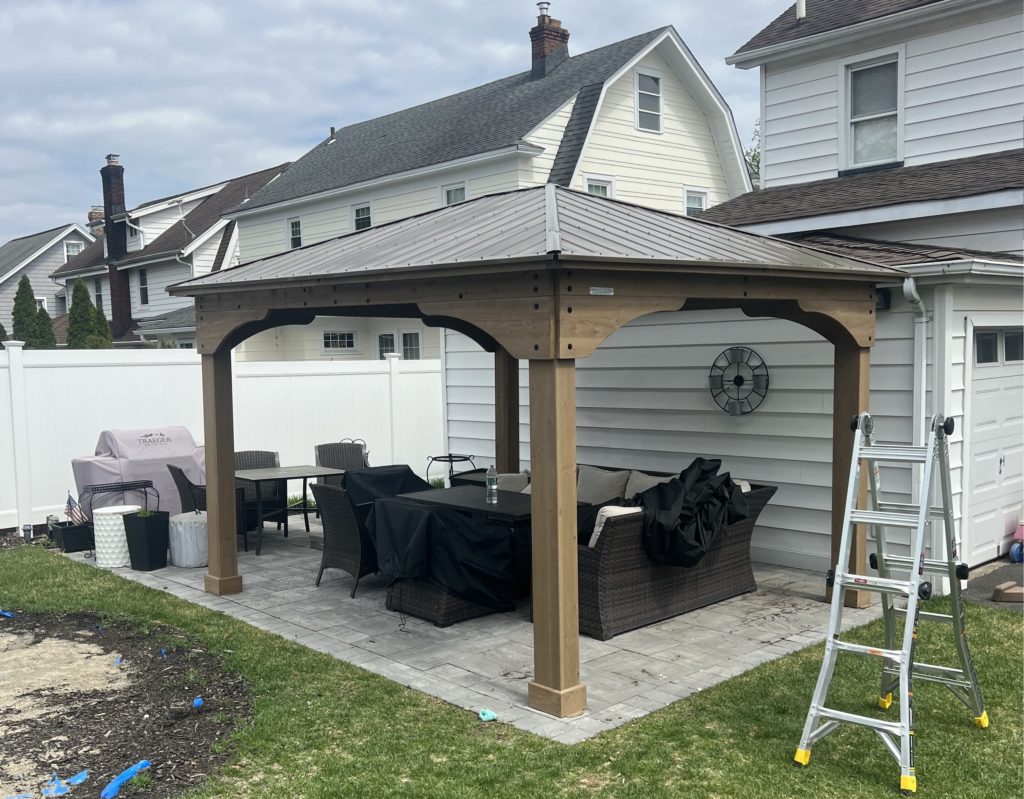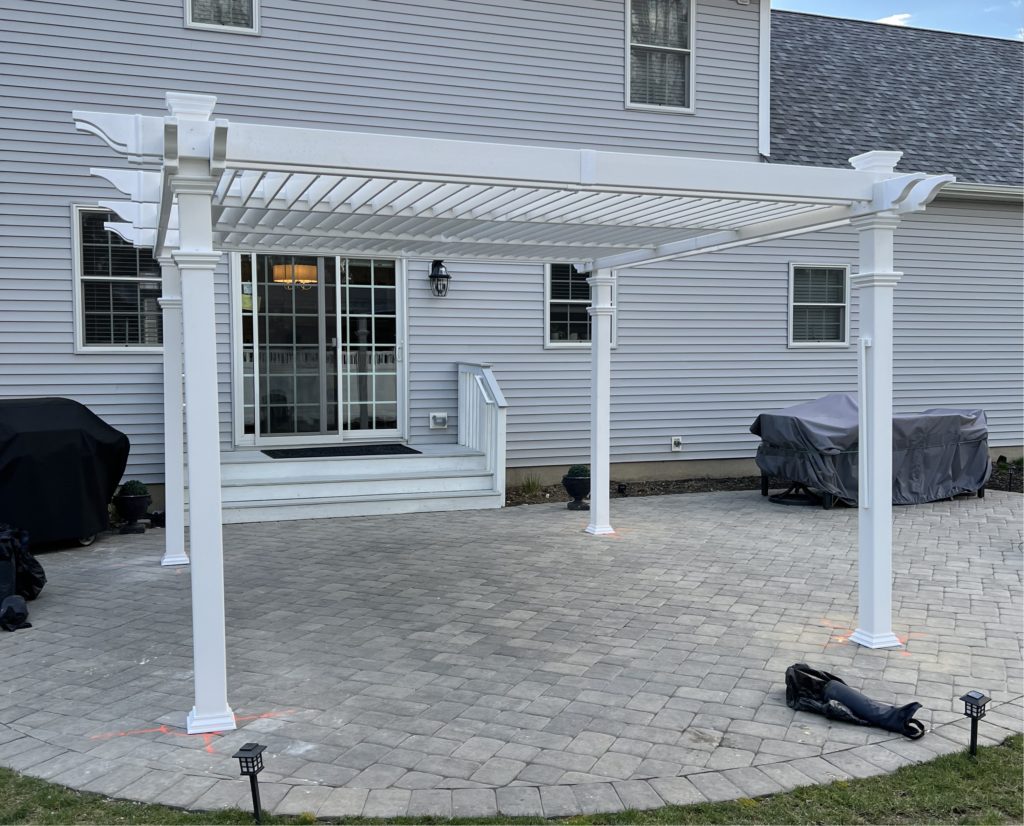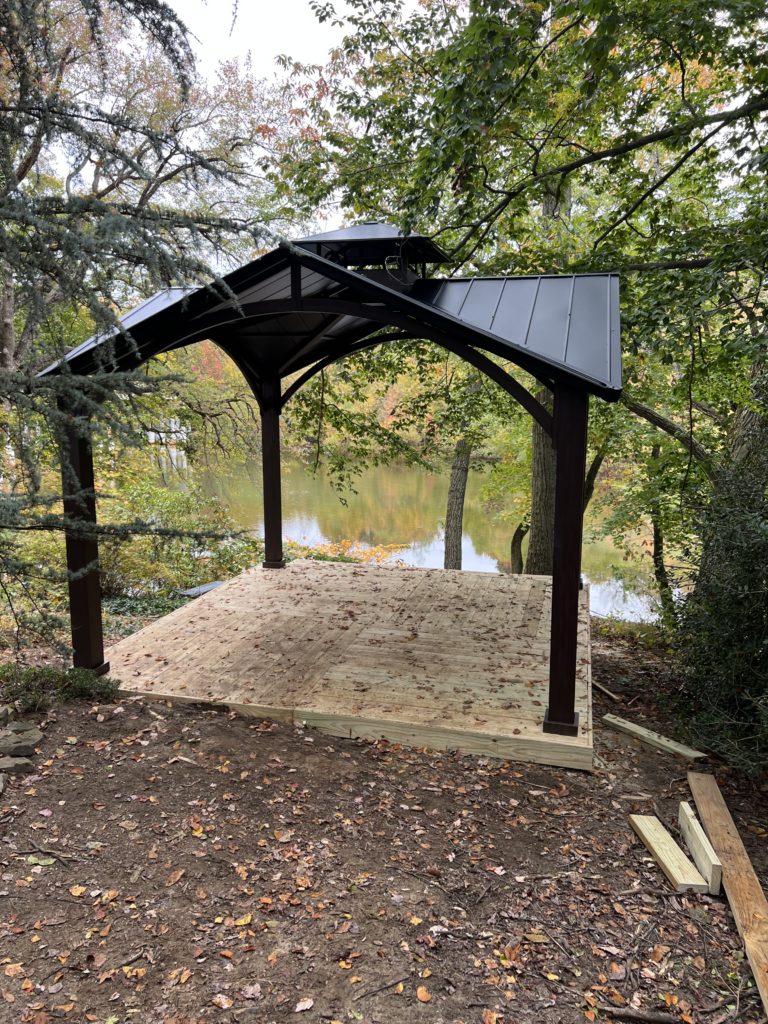When it comes to ceiling fan installation, replacement, and repair in Allenhurst NJ, finding a reliable and experienced professional is crucial. A ceiling fan not only provides comfort by circulating air in a room, but it also adds a stylish element to any space. Whether you need a new ceiling fan installed, an old one replaced, or a malfunctioning fan repaired, hiring a skilled technician can ensure the job is done correctly and efficiently.
OUR CONTACT
Email Support:
info@gazebo-installation.com
Ask your question:
info@gazebo-installation.com
Some of Our Portfolio Gazebo and Pergola Assembly Projects



Installing a ceiling fan may seem like a simple task, but it requires electrical knowledge and expertise. A professional technician will have the necessary skills to safely handle electrical connections and ensure the fan is secured properly. They will also be able to assess the electrical capacity of your room and advise on the most suitable fan for your needs. Additionally, hiring a professional can save you time and effort, as they will have the necessary tools and equipment to complete the installation efficiently.
If you already have a ceiling fan in your Allenhurst NJ home but it is outdated or not functioning properly, it may be time for a replacement. Upgrading to a newer model can improve energy efficiency and provide additional features such as remote control operation or integrated lighting. A professional technician can help you select the right replacement fan for your space and ensure a seamless installation.
In the event that your ceiling fan is experiencing issues such as wobbling, noise, or a complete breakdown, seeking professional repair services is highly recommended. Attempting to fix the fan yourself can be dangerous and may cause further damage. A skilled technician can diagnose the problem and offer effective repair solutions, whether it be replacing a faulty motor, balancing the fan blades, or fixing wiring issues.
Overall, when it comes to ceiling fan installation, replacement, and repair in Allenhurst NJ, relying on a professional technician is the best way to ensure a safe and efficient outcome. Hiring an experienced specialist will not only save you time and effort but also give you peace of mind knowing that the job is being done by someone with the right knowledge and skills. So, whether you’re looking to install a new fan, replace an old one, or repair a malfunctioning unit, don’t hesitate to call on a trusted professional in the Allenhurst NJ area.
A Guide to Professional Ceiling Fan Installation in Allenhurst NJ
Installing a ceiling fan in your home can provide numerous benefits, including improved air circulation, energy efficiency, and enhanced aesthetic appeal. However, proper installation is crucial to ensure the fan functions safely and effectively. If you’re located in Allenhurst NJ and looking for professional ceiling fan installation services, follow this guide for a smooth and hassle-free experience.
Hiring a Licensed Electrician: When it comes to ceiling fan installation, it’s always recommended to hire a licensed electrician who has experience and expertise in handling electrical work. They will ensure the installation process meets all safety requirements and will be able to handle any wiring or electrical issues that may arise during the installation process.
Choosing the Right Fan:
- Prior to installation, it’s essential to select the right ceiling fan for your space. Factors to consider include the size of the room, ceiling height, desired airflow, and the overall style of the fan.
- Measure the room’s dimensions to determine the appropriate size of the fan. For rooms with low ceilings, consider a flush-mount or low-profile fan to avoid any clearance issues.
- Decide whether you want a fan with a light kit or without one, depending on your lighting needs.
- Consider the energy efficiency of the fan to potentially save on utility bills. Look for fans with an Energy Star certification.
The Installation Process:
- Before starting the installation, make sure the power to the room is turned off at the circuit breaker to prevent any electrical accidents.
- Assemble the fan according to the manufacturer’s instructions. Ensure all necessary parts and hardware are included.
- Identify the appropriate location on the ceiling for the fan. It should be centered in the room and at least 18 inches away from the nearest wall.
- Secure the fan’s mounting bracket to the ceiling using the provided screws and ensure it is securely fastened.
- Connect the fan’s wiring to the electrical box in the ceiling, following the manufacturer’s instructions. Use wire connectors to safely secure the connections.
- Attach the fan blades to the motor housing, ensuring they are securely locked in place.
- Turn on the power and test the fan to ensure it is functioning correctly. Make any necessary adjustments, such as balancing the blades, if needed.
By following this guide and hiring professionals for ceiling fan installation in Allenhurst NJ, you can enjoy a properly installed and functional ceiling fan in your home, providing you with comfort and style for years to come.
The Importance of Hiring a Professional Electrician
When it comes to electrical work, such as ceiling fan installation, replacement, and repair, it is crucial to hire a professional electrician. Attempting to handle these tasks on your own or hiring an inexperienced person can lead to serious safety hazards and costly mistakes.
Experience and Expertise: Professional electricians have undergone extensive training and have years of experience in handling electrical repairs and installations. They have the necessary knowledge and skills to properly assess the electrical needs of your home and complete any task efficiently and safely.
Compliance with Safety Standards: Electricians adhere to strict safety regulations and guidelines set by relevant authorities. They understand the importance of following these standards to ensure the safety of your home and loved ones. Hiring a professional electrician guarantees that your electrical work will be done in compliance with these safety codes.
Proper Tools and Equipment: Electricians have access to the latest and most advanced tools and equipment required for electrical work. This allows them to complete tasks more efficiently and effectively, minimizing the risk of accidents or damage to your property.
Problem Diagnosis and Troubleshooting: Electrical issues can be complex and require careful diagnosis and troubleshooting. Professional electricians have the expertise to pinpoint the root cause of the problem accurately. Hiring a professional ensures that the issue will be addressed correctly, preventing further damage or potential safety hazards.
Long-term Cost Savings: While hiring a professional electrician may seem like an additional expense, it can actually save you money in the long run. Properly installed, maintained, and repaired electrical systems are less likely to experience issues, reducing the need for costly repairs or replacements in the future.
Insurance Coverage: Professional electricians are typically insured, providing you with peace of mind and protection in case of any accidents or injuries that may occur during the electrical work. This ensures that you are not held liable for any damages or medical expenses.
Legal Compliance: Electrical work often requires permits and inspections to comply with legal regulations. Professional electricians are aware of these requirements and can handle the necessary paperwork and coordination with local authorities, saving you time and effort.
In conclusion, when it comes to electrical projects such as ceiling fan installation, replacement, or repair, hiring a professional electrician is essential. Their experience, expertise, adherence to safety standards, proper tools, and troubleshooting skills ensure a reliable and safe electrical system for your home, providing long-term cost savings and peace of mind.
How to Choose the Right Ceiling Fan for Your Space
Choosing the right ceiling fan for your space is essential to ensure optimal cooling and comfort. With so many options available, it can be overwhelming to make the right choice. Here are some important factors to consider when selecting a ceiling fan:
1. Size: Ceiling fans come in various sizes, so it’s important to choose one that fits the dimensions of your space. For small rooms, a fan with a diameter of 36-42 inches is usually sufficient, while larger rooms may require fans with diameters of 52 inches or more.
2. Style: Ceiling fans come in a wide range of styles to suit different decor aesthetics. Consider the overall style of your space and choose a fan that complements it. Whether you prefer a sleek modern design, a rustic look, or a more traditional style, there’s a fan out there to match your taste.
3. Blades: The number and angle of the fan blades can impact the effectiveness of the cooling. Generally, fans with more blades provide better airflow, but this may not always be the case. Look for fans with blades that are properly angled, as this helps to circulate the air efficiently.
4. Motor: The motor is the heart of a ceiling fan, so it’s important to choose one that is powerful and efficient. Look for fans with motors that have a high CFM (cubic feet per minute) rating, as this indicates better airflow. Additionally, opt for fans with motors that operate quietly for a peaceful environment.
5. Energy Efficiency: Ceiling fans can help reduce energy costs, so it’s worth considering their energy efficiency. Look for fans that are ENERGY STAR certified, as these are designed to consume less energy while still providing effective cooling. This not only benefits the environment but also saves you money in the long run.
6. Controls: Consider the control options available for the ceiling fan. Some fans come with remote controls, allowing you to adjust the settings from anywhere in the room. Others may have wall-mounted controls or pull chains. Choose the control system that suits your convenience and preference.
By considering these factors, you can choose the right ceiling fan for your space that not only provides effective cooling but also enhances the overall aesthetic appeal of the room. Don’t hesitate to consult a professional if you’re unsure about which fan would be best for your needs.
Understanding the Installation Process for Ceiling Fans
Installing a ceiling fan can be an excellent addition to any room, providing both a functional and aesthetic upgrade. However, it is essential to understand the installation process to ensure a successful and safe installation. This section will outline the steps involved in installing a ceiling fan and provide some essential guidelines to consider.
Installation Process:
1. Turn off the power: Before starting any electrical work, it is crucial to turn off the power to the area where the ceiling fan is being installed. This can be done by switching off the circuit breaker or removing the appropriate fuse.
2. Prepare the ceiling: Ensure that the ceiling is structurally capable of supporting the weight of the fan. If necessary, reinforce the electrical box or install a new one. Make sure the ceiling is clean and free from any debris.
3. Assemble the fan: Follow the manufacturer’s instructions to assemble the fan. This typically involves attaching the fan blades, motor housing, and any additional components. Double-check that all screws and fasteners are securely tightened.
4. Mount the fan: Securely mount the fan bracket/plate to the ceiling electrical box. This will help distribute the weight of the fan and ensure stability. Confirm that the mounting bracket is level before proceeding.
5. Connect the wires: Carefully connect the electrical wires from the fan to the corresponding wires in the ceiling. Typically, this involves connecting the black (hot) wire to the black wire, the white (neutral) wire to the white wire, and the green or copper (ground) wire to the grounding screw or wire in the ceiling box. Secure the connections with wire nuts.
6. Attach the fan blades: Install the fan blades onto the motor housing, ensuring they are securely fastened. Double-check that each blade is balanced and aligned properly to avoid any wobbling or noise issues.
7. Install the light fixture (if applicable): If the ceiling fan includes a light fixture, carefully install it following the manufacturer’s instructions. Ensure that all electrical connections are properly made and secure.
8. Test the fan: After completing the installation, restore power to the area and test the fan to ensure it is functioning correctly. Check for any unusual noises, vibrations, or other issues that may require adjustment.
Summary:
Installing a ceiling fan requires careful preparation, following instructions, and adhering to safety guidelines. By understanding the installation process and taking necessary precautions, you can enjoy the benefits of a properly installed and operational ceiling fan in your home.
- Turn off the power before starting.
- Prepare the ceiling and ensure its structural capability.
- Assemble the fan according to manufacturer’s instructions.
- Mount the fan securely.
- Connect the electrical wires properly.
- Attach the fan blades securely.
- Install the light fixture (if applicable).
- Test the fan for proper functionality.
OUR CONTACT
Email Support:
info@gazebo-installation.com
1126 Falls Terr, Union NJ 07083
Ask your question: info@gazebo-installation.com